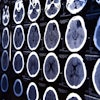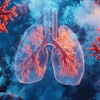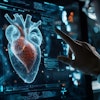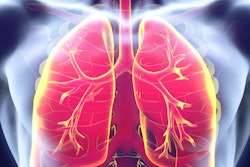
Medical imaging exams occupied five of the top 10 spots in a literature review of studies on overused medical procedures published October 2 in JAMA Internal Medicine. The study authors recommended that additional regulation might be necessary to curb practices that increase healthcare costs and do not help patients.
Dr. Daniel Morgan from the University of Maryland and colleagues reviewed original research articles published in 2016 to find the ones they felt best illustrated the problem of medical overuse (JAMA Intern Med, October 2, 2017). After starting with 1,224 candidates, they eventually narrowed their list down to 10 studies.
Of the 10, studies on the overuse of medical imaging exams occupied five slots:
- Overuse of transesophageal echocardiography (TEE) rather than transthoracic echocardiography (TTE) for stroke patients. While previous research indicates that TEE is more sensitive than TTE for detecting the cause of stroke, it is more invasive and requires sedation. Researchers found that TEE does not improve clinical care, and clinicians should generally avoid it for the workup of stroke.
- Overuse of pulmonary CT angiography (CTA) compared with D-dimer testing for suspected pulmonary embolism. A research group found that pulmonary CTA was performed as the initial test in 60.8% of patients with low pretest probability of stroke, while D-dimer testing was underutilized, leading to treatment delays, higher costs, and patient exposure to radiation.
- Overuse of CT in patients with respiratory symptoms. Researchers noted that the use of CT in the emergency department quadrupled from 2.2% to 9.4% from 2001-2002 to 2009-2010. The largest increase was among patients with nonacute upper respiratory tract symptoms. At the same time, there was no change in antibiotic prescriptions and hospital admission over the time periods, indicating that rising CT use led to no change in patient management.
- Overuse of carotid ultrasound and revascularization for asymptomatic patients. Researchers at the Veterans Health Administration studied patients who underwent carotid revascularization for asymptomatic carotid stenosis between 2005 and 2009. They found that carotid ultrasound was judged to be appropriate in only 5.4% of patients, while it was deemed to have uncertain benefit in 83.4% and to be inappropriate in 11.2% of patients.
- Shared decision-making reduces cardiac testing. Noting that the use of advanced cardiac imaging for patients with chest pain has tripled in 10 years, researchers speculated that low-risk patients could be getting imaging exams that lead to more downstream tests. In a study, patients were randomized to receive either usual care or a decision aid involving a discussion with their practitioner. Those who used the decision aid were less likely to opt for cardiac testing, and there were no major adverse cardiac events.
In their conclusion, Morgan and colleagues noted that research on medical overuse increased in 2016, with 1,224 articles being reviewed, compared with 821 in 2015 and 440 in 2014. One of the themes of 2016 was the overuse of imaging technology, which could lead to overdiagnosis and the risk of adverse events in patients.
They suggested policy changes to reduce medical overuse, such as requiring that new technologies show patient benefit before they can be approved by the U.S. Food and Drug Administration (FDA), as well as limits by insurance companies on paying for technologies that have limited clinical benefit.




















